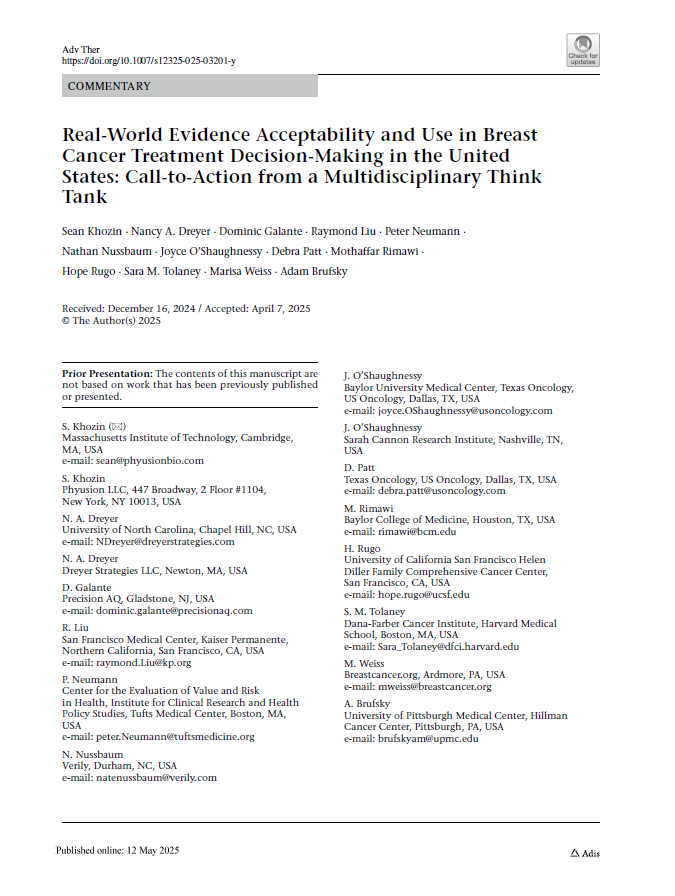
Early last year, our team produced a paper entitled Oncology Outlook 2021: Scientific breakthroughs and competitive breakouts. It was a fun paper to write because it gave us an opportunity to broadly review the market landscape, identify key trends, and make some predictions for 2021. Predictions are almost always fun, but they’re only valuable if they’re accurate. So, we thought it would be good to take a quick look backward to see how we did.
In a future paper, we will resume our forward-looking attitude and deliver an outlook for 2022. For now, let’s see if last year turned out like we expected.
Overall, we identified six key trends / predictions that would hold sway through 2021:
- Select indications (specifically multiple myeloma, non-small cell lung cancer, and melanoma) will see continued intense activity.
- CAR-Ts will expand and entrench in liquid cancers.
- Checkpoint inhibitor (CPI) competition will intensify with several combination therapies on the cusp of success.
- Targeted therapies will surge with new targets and better diagnostics.
- Emerging modalities are poised to break through in solid tumors.
- Earlier and easier regimens will drive competitive differentiation.
Below, we explore each in more detail.
Select indications will see continued intense activity.
In our previous paper, we had highlighted 3 indications where we expected intense activity:
- Multiple myeloma (MM)
- Non-small cell lung cancer (NSCLC)
- Melanoma
Multiple Myeloma
As expected, we saw several FDA line-extensions in MM (in addition to the approval and subsequent withdrawal of Oncopeptides’ Pepaxto). Our attention, though, had been focused on the B-cell maturation antigen (BCMA) market, with the anticipated approval of two new BCMA CAR-Ts and expected progress along other modalities.
On the BCMA CAR-T front, only one of the two CAR-T therapies was actually approved. Bristol Myers Squibb’s ide-cel was approved after several delays.[1] However, the FDA delayed the PDUFA date for cilta-cel (Janssen/Legend) to Feb 2022.[2] This is despite the FDA’s grant of a priority review in May 2021.[3] The bi-specifics arguably progressed faster than we expected, with Janssen filing for FDA approval for teclistamab (BCMA bispecific).[4]
Non-Small Cell Lung Cancer
In NSCLC, competitive developments continued at a whirlwind pace and added significant further complexity to this biomarker-driven market, as we had expected. Notable approvals included:[5]
- Mobocertinib for EGFR Exon20 Insertion+ NSCLC
- Sotorasib for KRAS G12C-mutated locally advanced or metastatic NSCLC
- Amivantamab for patients with NSCLC with EGFR Exon 20 insertion mutations
- Tepotinib for patients with metastatic NSCLC with METex14 skipping alterations
Those approvals were in addition to several line extensions. For a good illustration of the impact this type of innovation has on patients, consider this: in 2021, patients with Exon 20 EGFR mutations went from having no approved therapies to two different treatment options, including an oral and an intravenous alternative.
Also notable was the increased penetration of therapies earlier in the treatment paradigm. Atezolizumab (Tecentriq) was approved as an adjuvant treatment following resection and platinum-based chemotherapy in patients with stage II to IIIA NSCLC whose tumors have high PD-L1 expression. It joined osimertinib, which had received FDA approval for adjuvant use in late 2020.[6]
Melanoma
In melanoma, competitive developments also continued apace. Although we had expected Iovance’s lifileucil to be approved in 2021, delays continue to dog the program. Iovance had previously pushed back its filing for lifileucel from 2020 to 2021, and has recently communicated that it now expects to file later this year.[7]
Nevertheless, biopharma continued to break new ground for immunotherapies in melanoma. For example:
- Tebentafusp, a novel bispecific fusion protein, showed a survival benefit in a phase 3 uveal melanoma study. Immunocore submitted its BLA and marketing authorizations for tebentafusp in August 2021.
- In somewhat of a surprise, the LAG3 inhibitor, relatlimab, in combination with nivolumab was successful in a phase 3 study. This will likely result in the approval of a novel checkpoint inhibitor class (beyond PD-1/L1 and CTLA4). Relatlimab has already been filed at and accepted for priority review by the FDA (with a PDUFA date in March 2022).
CAR-Ts will expand and entrench in liquid cancers.
Consistent with our expectations, CAR-T therapies continued to expand their presence in liquid cancers. As mentioned above, ide-cel’s approval represented the arrival of CAR-T therapies in multiple myeloma. Additionally, Breyanzi® (liso-cel) was finally approved in February of 2021. The new therapy had been delayed because the FDA had postponed its planned 2020 decision. Breyanzi joined Kymriah and Yescarta in diffuse large B-cell lymphoma (DLBCL).
Also in 2021, phase 3 data from the ZUMA-7 trial for Yescarta and the TRANSFORM trial for Breyanzi helped position them preferentially, especially compared to Kymriah, which failed its BELINDA trial in the second-line setting. Second-line (2L) success was critical for the CAR-Ts to help decisively challenge high-dose chemotherapy followed by hematopoietic stem cell transplant as the standard of care for 2L DLBCL.
A few other developments suggest that the CAR-T revolution is expected to continue. Autolus Therapeutics demonstrated impressive data in acute lymphocytic leukemia (ALL) with its AUTO1 program in ALL and indolent non-Hodgkins lumphoma (NHL). The company notably received a ~$250 million private equity investment from Blackstone to help fund further development and commercialization.
Finally, Novartis presented early clinical data from its next-gen CD19 and BCMA-directed CAR-T therapies, with plans to move into registration trials next year. Both therapies use Novartis’ new T-Charge process, which reduces the ex vivo culture time to about 24 hours and preserves naive and stem cell memory T-cells in the final product.
CPI competition will intensify with new combination therapies on the cusp of success.
When it comes to checkpoint inhibitors, 2021 delivered in ways that were highly consistent with our expectations. CPI competition did, indeed increase. There were 17 successful FDA approvals for line extensions across pembrolizumab, atezolizumab, nivolumab, cemiplimab and dostarlimab.
Notably, CPI news beyond the PD1/L1 antibodies attracted a lot of attention. As mentioned above, relatlimab (an LAG3-blocking antibody) in melanoma has the potential to expand the checkpoint-inhibitor class beyond PD-1/L1s and CTLA4. Also, tremelimumab, given up for dead by many, was successfully combined with durvalumab in liver cancer. This set the stage for a potential approval for a second CTLA4 targeted therapy.
There was also a flurry of licensing activities around up-and-coming CPI targets including CD47 and TIGIT. If successful, this could further intensify CPI competition by broadening the therapeutic class itself.
Targeted therapies will surge with new targets and better diagnostics.
As we predicted, targeted therapies continued to demonstrate impressive data across several modalities. As discussed earlier, several novel therapies targeting genetically defined subsets of patients in NSCLC were approved by the FDA. After the 2021 approval of sotorasib, we now await a filing from Mirati for their KRAS G12C inhibitor, MRTX849. Notably, the October 2021 approval of asciminib represented the first approval of an allosteric kinase inhibitor targeting BCR-Abl.
On the antibody and antibody-drug conjugate (ADC) end, 2021 represented a breakthrough year for ADCs, with approvals in gastric cancer for Enhertu and first approvals for tisotumab vedotin, enfortumab vedotin, loncastuximab tesirine, and sacituzumab govitecan.
Emerging modalities are poised to break through in solid tumors.
When it comes to solid tumors, we may have gone a little bit “out on a limb.” The accuracy of our predictions was decidedly mixed.
On the positive side, amivantamab was approved for EGFR exon20 NSCLC, and represented the first approval of an EGFR-MET bispecific antibody with immune cell-directing activity in solid tumors. Similarly, tebentafusp (a bispecific fusion protein targeting gp100 and T cells) has shown success in uveal melanoma and represents a further advance for the bi-specific class in solid tumors.
However, we had expected the approval of the first tumor-infiltrating lymphocyte therapy, lifileucel, in melanoma. Unfortunately, that was delayed into 2022. Another novel emerging modality, a gene therapy, continued to be dogged by delays and has also been pushed into 2022: nadofaragene firadenovec (rAd-IFN/Syn3), for the treatment of patients with bacillus Calmette-Guérin (BCG)-unresponsive non-muscle invasive bladder cancer (NMIBC).
Despite the setbacks, emerging modalities have continued their inexorable advance into solid tumors, and we expect 2022 to pick up where 2021 left off. As an example, Adaptimmune is prepared to submit its BLA this year for afami-cel, which if approved could be the first-ever TCR therapy, and first approved T-cell therapy for solid tumors.
Earlier and easier regimens will drive competitive differentiation.
Several approvals for agents in the adjuvant setting were in line with our prediction. As described above, atezolizumab was approved in adjuvant NSCLC. It joined osimertinib, which had received FDA approval for adjuvant use in late 2020.
In addition, pembrolizumab was approved in the adjuvant setting for renal cell cancer (RCC), and nivolumab was approved for adjuvant treatment of patients with esophageal or gastroesophageal junction (GEJ) cancer.
From a clinical development standpoint, the PARP inhibitor Lynparza® (olaparib) significantly improved disease free survival compared to placebo in patients with HER2- breast cancer harboring germline BRCA1/2 mutations. The FDA has granted olaparib a priority review for adjuvant treatment in BRCA-mutated HER2- breast cancer, and we expect approval in 2022.
Parting Thoughts and What to Expect Next
Overall, our expectations for rapid clinical innovation and commercial disruption for 2021 were largely met. Oncology continues to be one of the most competitive and rapidly evolving markets in the life sciences. For 2022, we expect to see more of the same.
While the accelerating pace of innovation is fantastic from a patient perspective, it does present significant challenges from a commercial perspective for biopharma companies. Development and commercial teams will have to remain agile and customer-focused…and likely become more so.
For cell therapies, the recent FDA delays suggest a need for companies to sharpen their focus on chemistry, manufacturing, and controls (CMC) and regulatory issues, and for better co-ordination between those teams. Commercial teams will also likely need to evolve new operating models, given multi-modality portfolios. In addition, the shadow of COVID continues to re-define the meaning of “normal,” so there could be lingering impacts associated with that, too. For our next article, we look forward to sharing our 2022 expectations.
Endnotes
[1]Keown, Alex, After Many Delays, BMS and bluebird Win Approval for Multiple Myeloma CAR-T, BioSpace, March 29, 2021, https://www.biospace.com/article/after-delays-bms-and-bluebird-win-approval-for-multiple-myeloma-car-t-therapy/
[2] Legend Biotech Press Release, Nov. 1, 2021, https://investors.legendbiotech.com/news-releases/news-release-details/legend-biotech-announces-extension-pdufa-date-cilta-cel
[3] Sternberg, Audrey, Cilta-Cel Earns FDA Priority Review for Relapsed/Refractory Multiple Myeloma, CancerNetwork, May 27, 2021, https://www.cancernetwork.com/view/cilta-cel-earns-fda-priority-review-for-relapsed-refractory-multiple-myeloma
[4] Taylor, Phil, J&J goes after another FDA approval for a cancer bispecific, PharmaForum, Dec. 30, 2021, https://pharmaphorum.com/news/jj-guns-for-another-fda-approval-for-a-cancer-bispecific/
[5] US FDA, https://www.fda.gov/drugs/resources-information-approved-drugs/oncology-cancer-hematologic-malignancies-approval-notifications, accessed Jan. 19, 2022
[6] US FDA, https://www.fda.gov/drugs/resources-information-approved-drugs/oncology-cancer-hematologic-malignancies-approval-notifications, accessed Jan. 19, 2022
[7] Armstrong, Madeleine, Iovance delayed again, Evaluate, May 19, 2021, https://www.evaluate.com/vantage/articles/news/snippets/iovance-delayed-again






